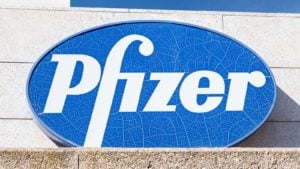
When it rains, it pours. However, the storm will eventually pass. Accordingly, investors that are able to identify solid businesses that have the staying power to emerge stronger from the storm can certainly outperform. Indeed, I think it’s possible to realize triple-digit gains, as many did during the 2022 selloffs, from picking such stocks
The circumstances are very much different in 2024. It’s very difficult to find quality companies like Alphabet (NASDAQ:GOOG, NASDAQ:GOOGL) and Meta (NASDAQ:META) at $90 these days. That said, there are still many other quality companies that are trading at bargain-basement levels. Such companies are my focus – the ones that can make a similar comeback over the next few years. We’re near a shift in economic policy, and this could catalyze a breakout over the next few years.
I think these three undervalued stocks will be among the top beneficiaries of shifting market trends.
MongoDB (MDB)

MongoDB (NASDAQ:MDB) is a leading database platform company. Despite MDB stock plunging by a staggering 42% from mid-May to mid-June, I believe the selloff is majorly overdone. Currently, the stock appears to offer compelling value.
First, it’s crucial to note that MongoDB’s steep decline came despite the company beating both top and bottom-line estimates in its latest quarter. MongoDB posted Q1 FY2025 adjusted earnings per share of 51 cents, handsomely surpassing consensus by 11 cents. Revenues also climbed by an impressive 22.3% year-over-year to $450.56 million, exceeding expectations by $10.9 million.
The primary culprit behind Wall Street’s severe punishment of this stock was MongoDB’s lowered outlook. The company trimmed its full-year sales guidance to $1.89 billion, down from the $1.915 billion projected in March. Similarly, adjusted earnings are now anticipated at $2.23 per share, a reduction from the earlier $2.38 forecast.
However, I firmly believe the market’s reaction is a clear overreaction. MDB stock has already rebounded nearly 20% from its mid-June trough, and I expect this recovery to gain further momentum. If MongoDB continues its streak of beating estimates and increasing guidance, the stock could be poised for an even more jaw-dropping breakout.
Southwest Airlines (LUV)

Southwest Airlines (NYSE:LUV) operates as a passenger airline carrier, providing scheduled air transportation services in the U.S. and international markets. While airline stocks are anything but rosy right now (as they grapple with the post-pandemic debt hangover and steep interest rate hikes), Southwest’s first quarter results suggest glimmers of hope on the horizon.
The company achieved record Q1 operating revenues and passenger numbers, marking eight straight quarters of top-line records. Managed business revenues surged an impressive 25% year-over-year. And Southwest’s trailing 12-month revenue in Q1 2024 posted a towering surge, coming in $4.3 billion higher than pre-pandemic levels in Q4 2019. Notably, the airline’s fleet has also continued to grow.
However, the crux of the issue lies in translating this revenue recovery into bottom-line profitability via margin expansion. As interest rates eventually moderate, Southwest should see much-needed relief on its interest expenses. I believe Southwest is far from dead in the water. The building blocks are there for a jaw-dropping breakout in the years ahead as the company polishes their operations and interest rates become more favorable. The current turbulence is undoubtedly significant. But Southwest seems poised to weather the storm.
Pfizer (PFE)

Pfizer (NYSE:PFE) is a global pharmaceutical giant delivering innovative medicines and vaccines. Indeed, Pfizer was the among greatest pandemic darlings. But this narrative has been crushed as the music stopped.
Coronavirus vaccines are highly politicized and are a thing of the past. Many people believed these companies would see recurring sales from people permanently taking booster shots every six months, as vaccine manufacturers and the health departments of certain countries recommended. That definitely did not happen. As such, PFE stock has been treated as a one-trick pony, with the stock down 52% from its peak.
However, I do think that a recovery is possible. The stock seems to be bottoming out. And when excluding sales Pfizer generated due to COVID-19 vaccines and medication, the business is reporting solid growth. In Q1 2024, Pfizer posted revenue of $14.88 billion, an 18.6% year-over-year decline. But this number still beat estimates by nearly $1 billion. The company’s non-COVID portfolio delivered strong results, indicating the underlying business remains robust. Financials are clearly stabilizing, and look poised to continue improving again.
The company’s oncology business should drive growth in the years to come, and Pfizer’s Seagen acquisition might also contribute to future growth. Pfizer’s pipeline progress gives me cautious optimism about its future prospects. I believe the worst may be over for PFE stock, as the company eyes a potential breakout.
On the date of publication, Omor Ibne Ehsan did not hold (either directly or indirectly) any positions in the securities mentioned in this article. The opinions expressed in this article are those of the writer, subject to the InvestorPlace.com Publishing Guidelines.
On the date of publication, the responsible editor did not have (either directly or indirectly) any positions in the securities mentioned in this article.





